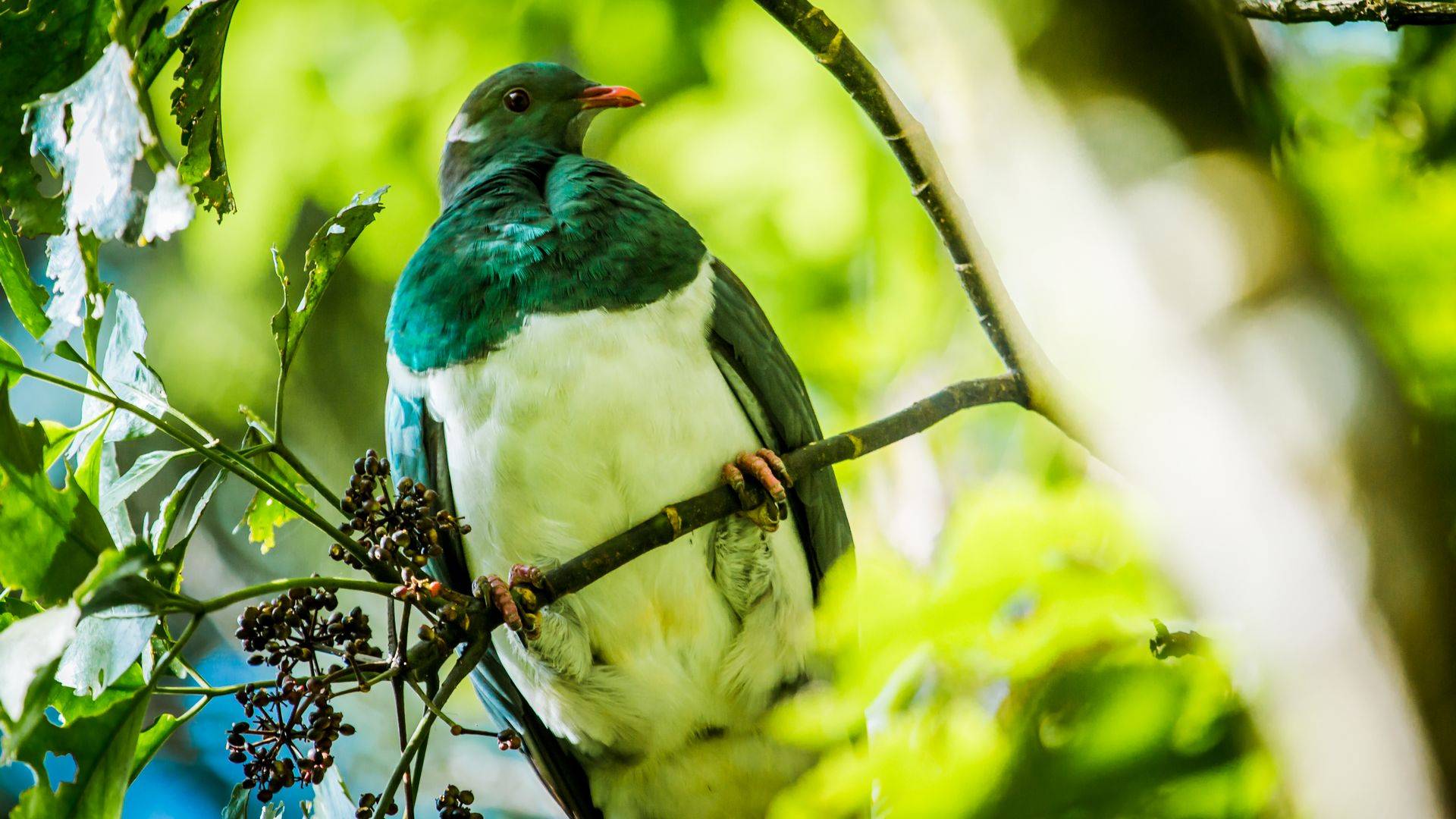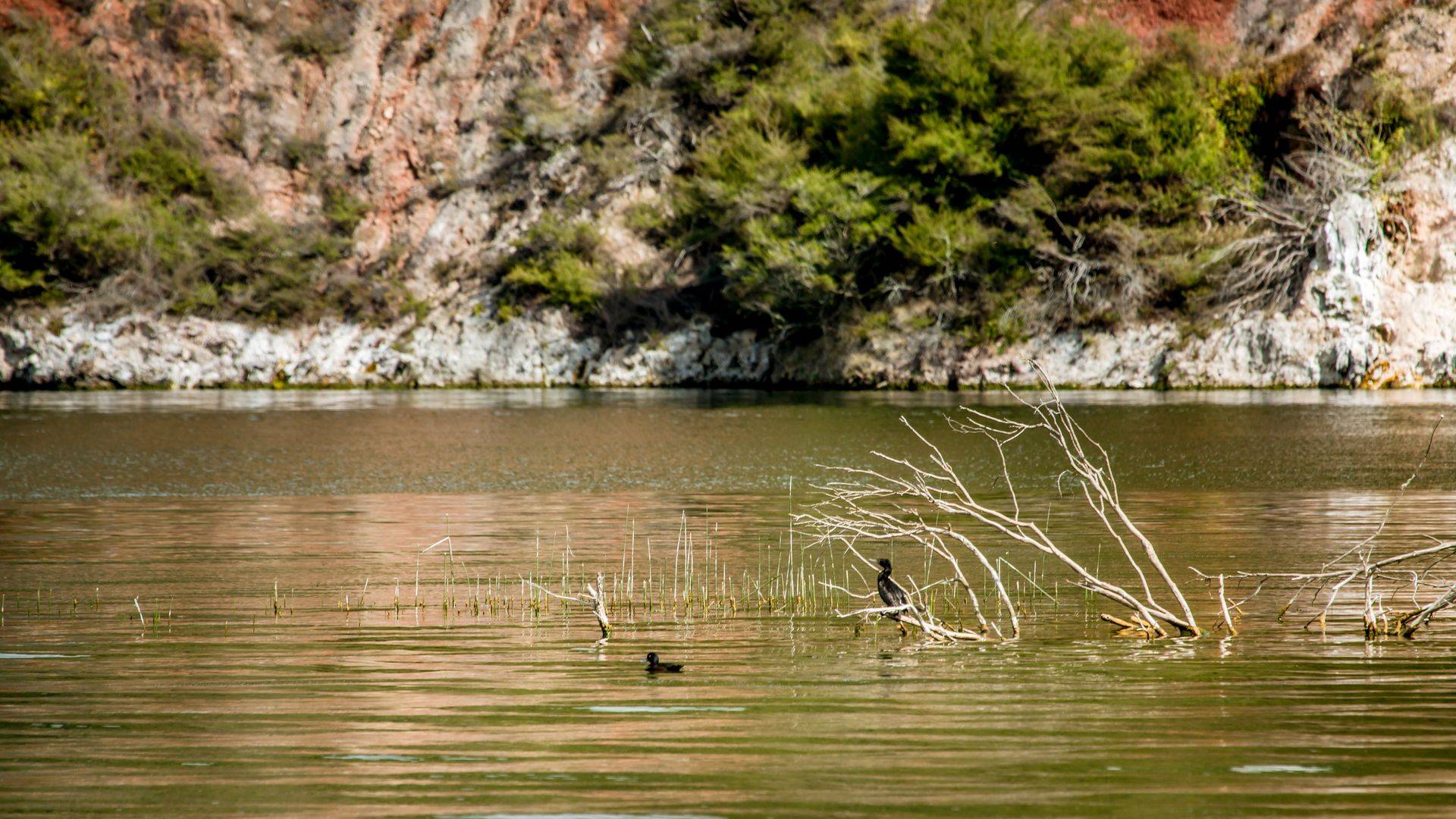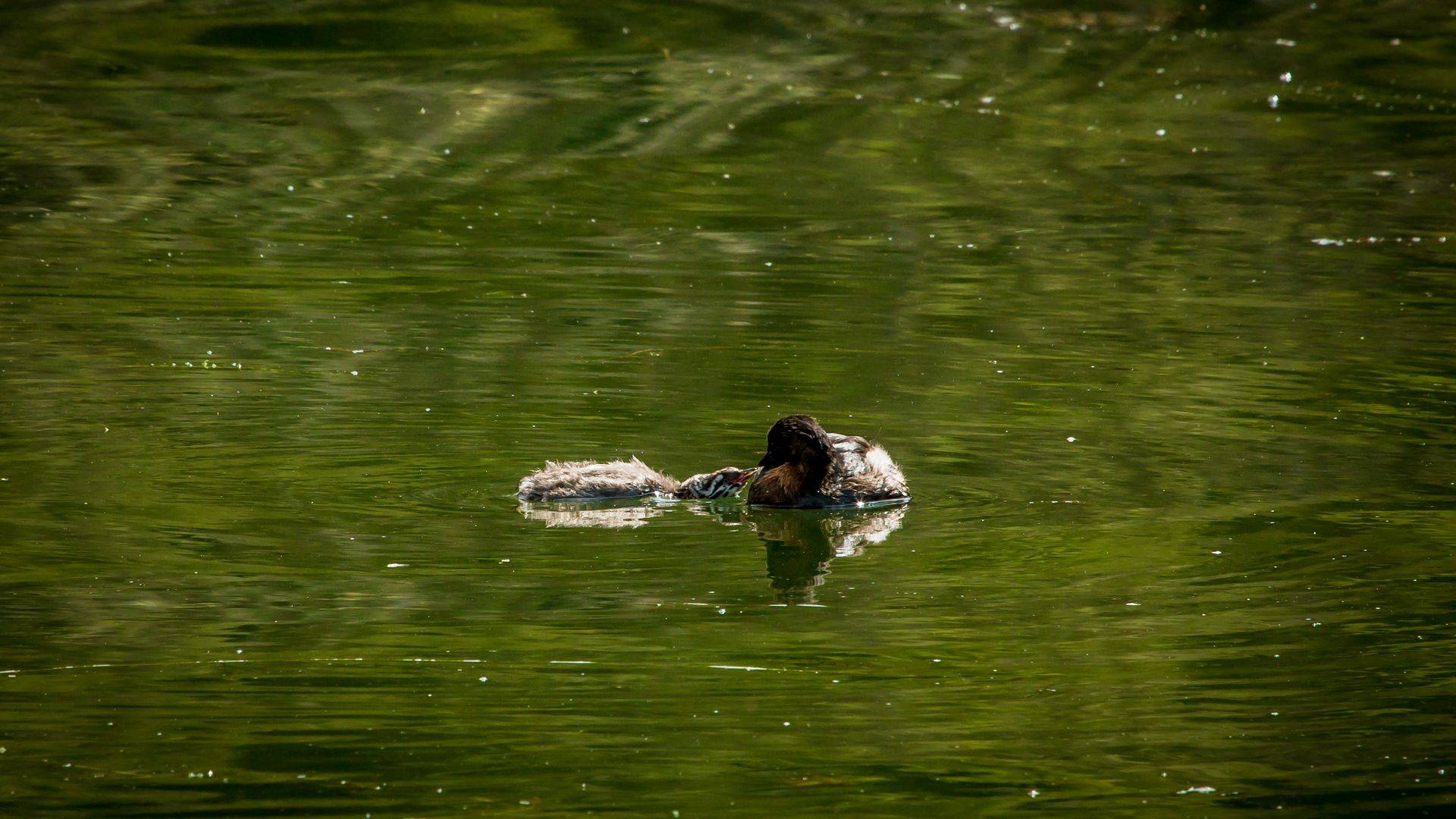New Zealand Birds at Waimangu
Waimangu Volcanic Valley is a great place to see a variety of New Zealand Birds. Due to the world significance of the area, it is classed as a wildlife refuge, so all bird species are protected, whether they are native or introduced.
New Zealand Birds you may see at Waimangu
Kereru – New Zealand Pigeon
As you leave the visitor centre at Waimangu and make your way down the hill, keep an eye out for Kereru in the bushes on the left of the trail. These iconic pigeons are a New Zealand favourite, found in towns and cities as well in native forest and rural areas. This New Zealand bird is one of the largest pigeons in the world, weighing in at about 650g. They are noisy flyers with a distinctive wingbeat, so you’ll often hear them before you see them.
Kereru feed on buds, leaves, flowers and fruit and do a valuable job in dispersing these seeds to other areas, particularly useful in areas of regenerating native forest like the Waimangu valley.

Riroriro - Grey Warbler
The Grey Warbler is one of the lightest New Zealand birds weighing in at around 6g. It is the second smallest bird in New Zealand, after the rifleman with a slightly shorter tail!
Often heard rather than seen, their voice is huge given their size. It is described as a high-pitched trill and is a territorial call from the males, the females don’t sing but do have a chirp call. You’ll hear them right through the valley, and if you look carefully around the Southern crater, you may be ucky enough to see one.
Grey Warblers are the host for the parasitic Shining Cuckoo. The cuckoo will lay an egg in a Grey Warbler nest. When it hatches, the cuckoo chick will reject the other eggs and chicks and be raised alone by the Warbler.
Piwakawaka - Fantail
One of the most iconic New Zealand birds is the fantail. Their fan shaped tail makes them particularly agile in flight. They chase flies and moths for food and like to feed on beetles and spiders. These little guys are pretty vocal, and their call can be described as a high-pitched chatter. Listen out for them as you walk throughout the valley at Waimangu, particularly on the nature trail. Here, by Lake Rotomahana food is readily available, and the juveniles will often form loose flocks to feed.
Black Swan
Take the boat cruise out on Lake Rotomahana and you’ll see plenty of these beautiful New Zealand birds. These black swans with bright red bills are slow and graceful swimmers but are ungainly when walking on land. They are plant eaters, feeding mainly on submerged freshwater plants. If the lake water levels are too high to reach these plants, they may be seen grazing on lakeside pastures.
Kawaupaka - Little Shag
Little shag or cormorants are pretty common in New Zealand. This native bird thrives in both fresh and salt water environments. Identified by a short yellow bill and black feet, they are black with either white cheeks and throat, or completely white underparts. They like to eat alone and favour a diet of small fish and crustaceans and are also known to eat frogs and tadpoles.
Look in the trees overhanging Lake Rotomahana, this is where the little shag likes to nest. They build a nest with twigs and like it with fibrous material such as fine grasses.

Weweia – New Zealand Dabchick
This endemic water bird currently extinct in the South Island, and has patchy populations in the North Island, most commonly found around the lakes in the Central Plateau in Rotorua and Taupo.
Dabchicks dive up to 4 metres underwater to find small aquatic animals to eat and can hold their breath for up to 40 seconds. They have a submarine-like ability to change their buoyancy by adapting the angle of their feathers.
Look out for the New Zealand Dabchick at Lake Rotomahana.

